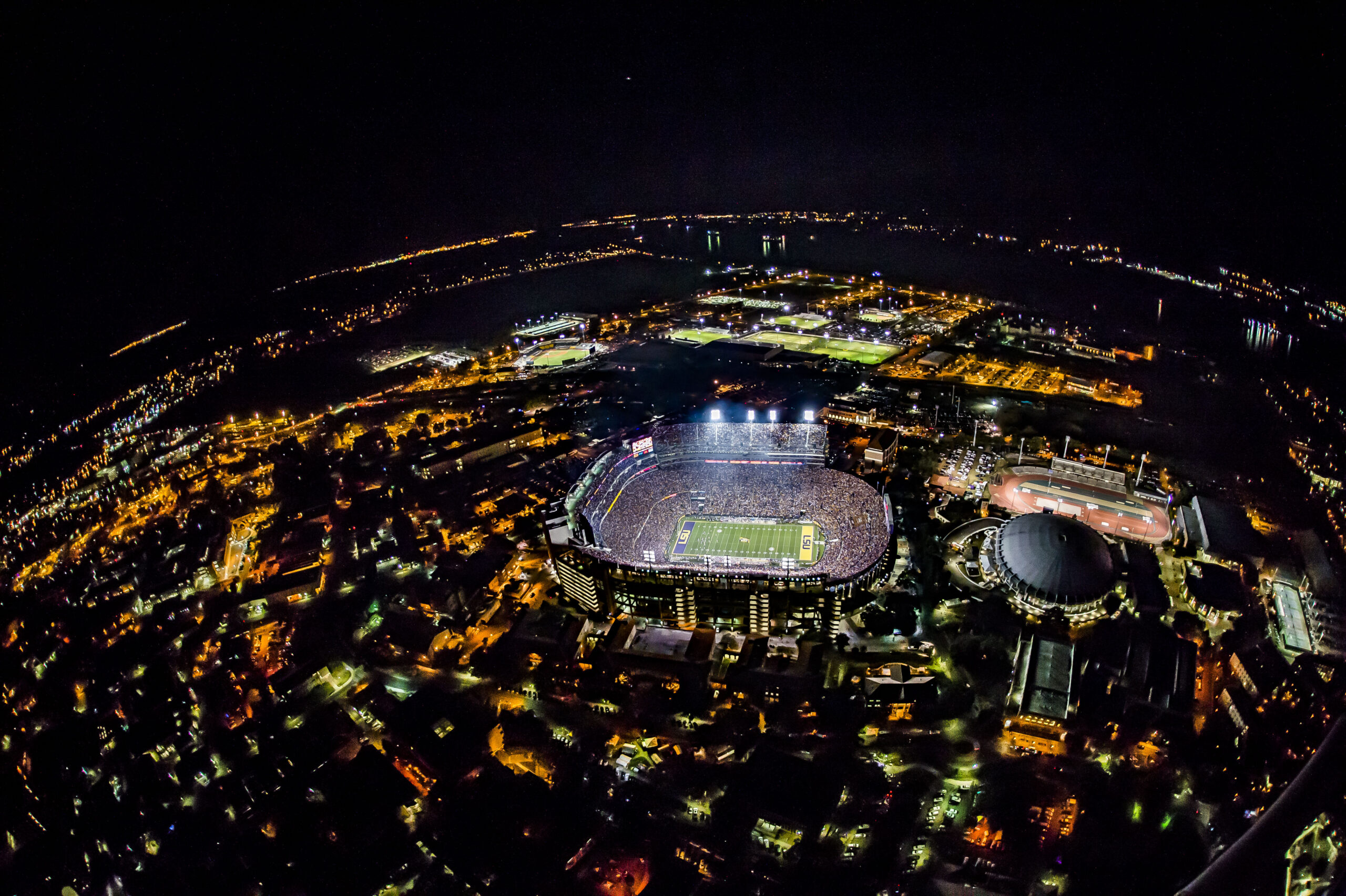
Tiger Stadium turns 100: Chronicling the history of one of the game’s most iconic landmarks
This story has been updated to correct the team LSU competed against in the referenced 1979 matchup.
Home to football greats, earthquakes, dorm dwellers and so much more, Death Valley is one of the most revered—and feared—sports venues in the nation. Let’s take a look at how one of the greatest (and loudest) places to watch college football came to be.
Sources: LSUsports.net , LSU.edu, NCAA.com, NOLA.com, SI.com, Under Stately Oaks: A Pictorial History of LSU (Revised Edition) by Thomas F. Ruffin, The Fighting Tigers, 1893-1993: One Hundred Years of LSU Football by Peter Finney
|
|
TIMELINE
1924
Tiger Stadium opens to fans for a Thanksgiving Day matchup against Tulane, with seating for about 12,000 in stands east and west of the field. Construction was pushed along to be completed for the matchup, but some sections are still roped off and awaiting inspection.
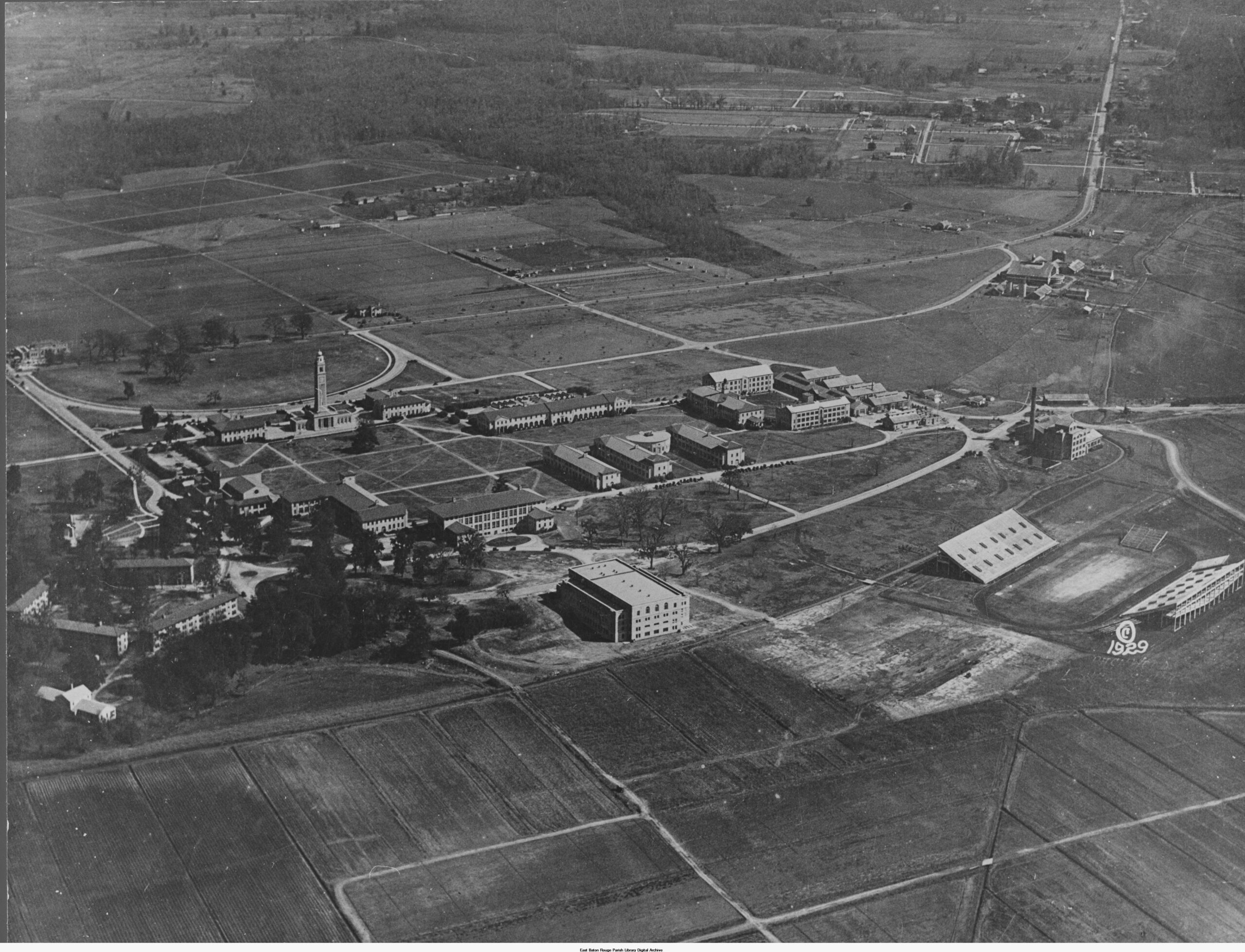
1931
LSU introduces night games in Tiger Stadium. Capacity is also increased by about 10,000 more seats by extending stands upward.
1934
Tiger Stadium is again expanded thanks to then-Gov. Huey P. Long’s sly use of dormitory funds. Male dorms are added underneath new seating areas. The student dorms remain open until the 1960s, and are used again temporarily in the ‘80s.

1936
WPA workers enclose the north end zone at Tiger Stadium, creating a horse-shoe shape and increasing capacity to about 46,000. More athletic offices and male dormitories are added underneath.
1952
The Golden Band from Tigerland performs the iconic “LSU Tiger Triumph March” for the first time in Tiger Stadium during a Tennessee matchup.
1953
Tiger Stadium’s horse-shoe is closed in to create its lower bowl with the addition of seating in the south end zone. Capacity reaches about 68,000.
1958
LSU Football wins its first national championship, thanks to a perfect 11-0 streak. Many say this season galvanizes LSU fandom and propels on-campus tailgating to new heights.
1959
Billy Cannon makes his historic 89-yard punt return to defeat Ole Miss, securing LSU’s No. 1 ranking—and later, the program’s first Heisman Trophy.
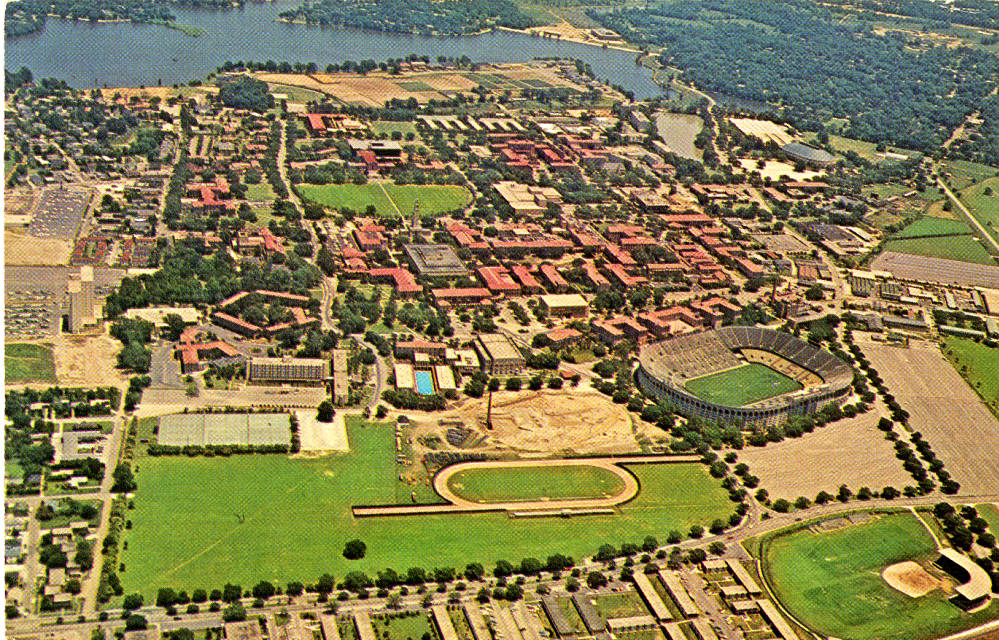
1978
The original upper deck is added, plus two club levels, raising capacity. Several reconfigurations in the ’80s and early ’90s will bring total seating to about 80,000.
1979
LSU comes up short in its matchup against No.1-ranked USC in September, but many at the time claim this to be the loudest Tiger Stadium had been to date.
1988
The first earth tremor in Tiger Stadium is registered by the LSU Geology Department after LSU running back Eddie Fuller scores the game-winning touchdown against Auburn.
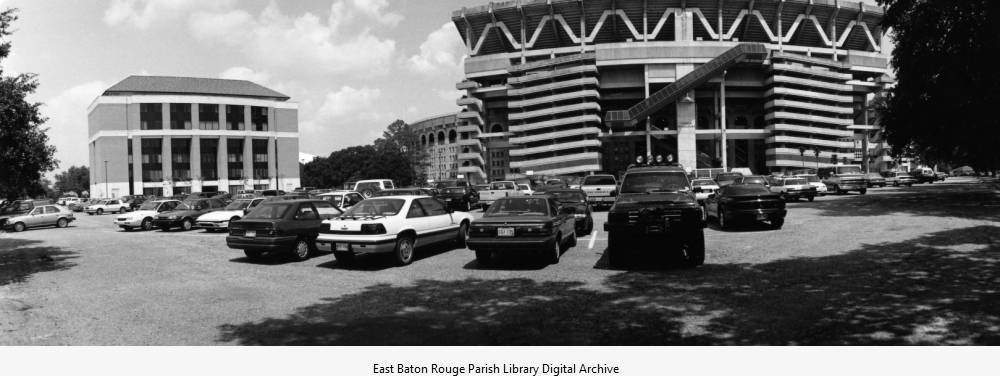
1997
Fans take down Tiger Stadium’s goal posts following a defeat of the No. 1-ranked Florida Gators—marking LSU’s first recorded instance of a goal-post-tumbling celebration in Death Valley.
2000
The east upper deck debuts and the Tiger Den Suites are introduced to provide fans with “luxury accommodations,” bringing capacity to 92,000.
2003
Under Coach Nick Saban, LSU wins its second national championship with a 6-1 record at home.
2005
Death Valley hosts its first NFL events when the New Orleans Saints relocate for four games in the aftermath of Hurricane Katrina. LSU also unveils its $85 million west upper deck project with 3,200 high-end seats and a state-of-the-art press box.
2007
Tiger Stadium serves as the backdrop for another national championship season, this time under Coach Les Miles, with electrifying home wins against Florida and Auburn that each go down to the wire.
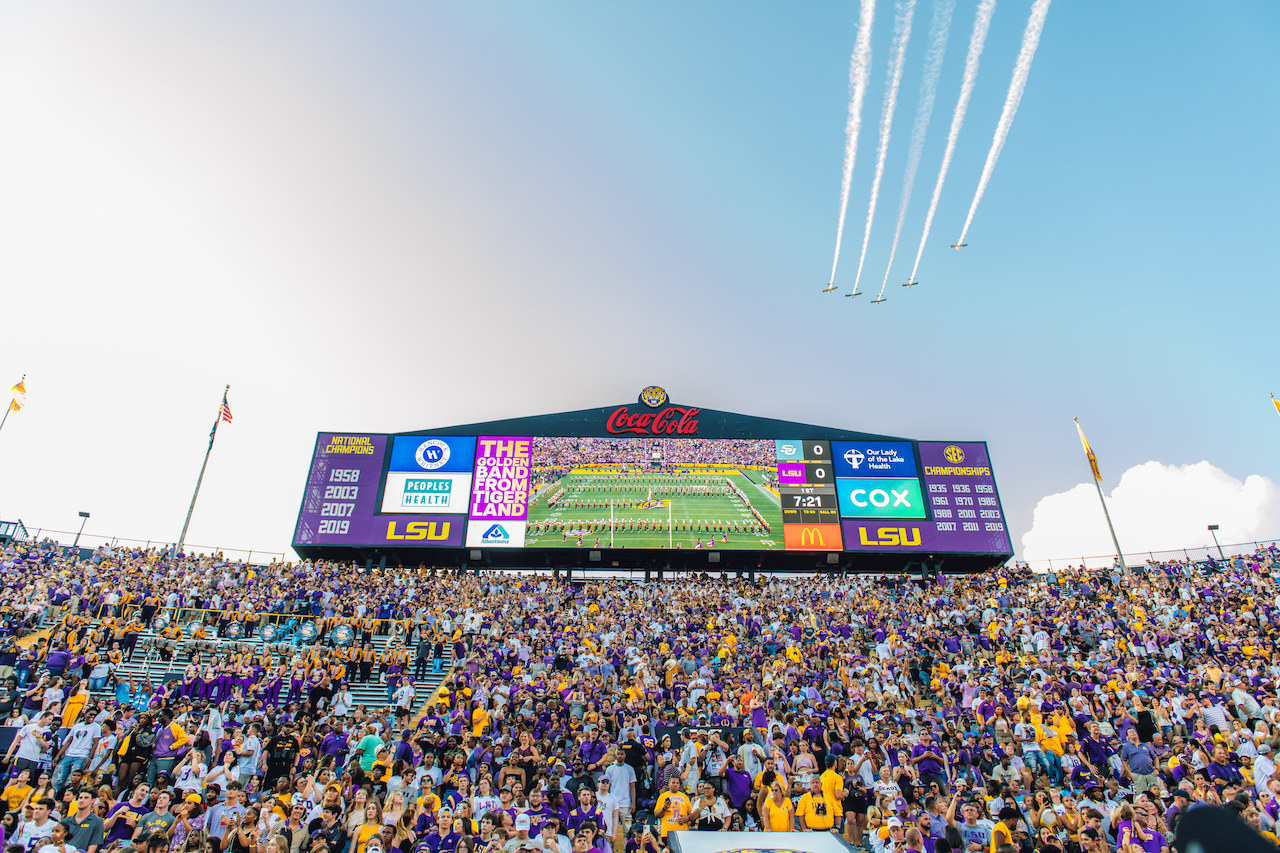
2009
Tiger Stadium’s 27-by-80-foot video board is added above the north end zone near the student section.
2010
Taylor Swift headlines opening night of the first-ever Bayou Country Superfest alongside some of the genre’s biggest stars like Keith Urban and Kenny Chesney.
2012
Lighting is added to Tiger Stadium’s archways to illuminate the stadium in purple and gold at night. Letters that spell out Tiger Stadium are also added to the west side facing Nicholson Drive.

2014
LSU unveils its south end zone expansion with added public seats, suites and club seating. The project increases capacity to 102,321, to which Tiger fans respond with pride, selling out home games against Mississippi State, Ole Miss and Alabama.

2019
Future Heisman-winner Joe Burrow dons his famous “Burreaux” jersey on senior night before beating Texas A&M to clinch a perfect 12-0 season. The team wins LSU’s fourth national championship and countless top recognitions under Coach Ed Orgeron.
2020
Tiger Stadium reduces capacity to 25% due to the COVID-19 pandemic. The Tigers only play four home games.
2022
Garth Brooks performs to a sold-out audience at Tiger Stadium. Celebrations during his live rendition of “Callin’ Baton Rouge” register yet another seismic event.
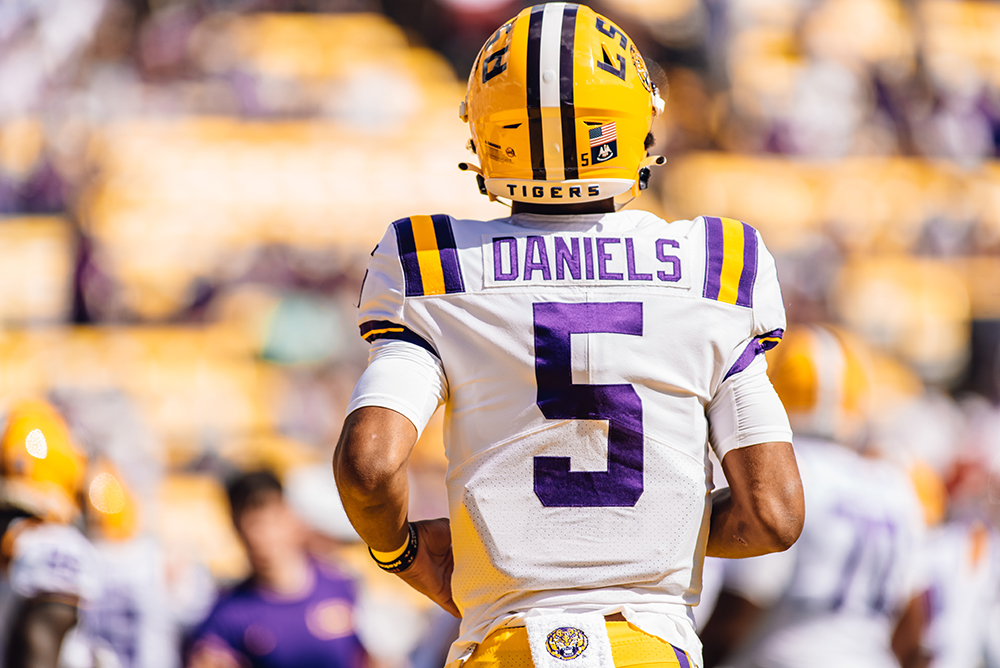
2023
Against Florida, Quarterback Jayden Daniels becomes the first in college football history to rush for 200 yards and pass for 350 yards in a single game. Daniels wins the Heisman for his standout season under Coach Brian Kelly.
2024
Death Valley will celebrate its centennial all season. Watch for stadium upgrades, like new, larger video boards, speaker towers and LED lights, plus signage and artwork to mark the milestone.
This article was originally published in 225 Magazine’s 2024 Tiger Pride edition.
|
|
|


